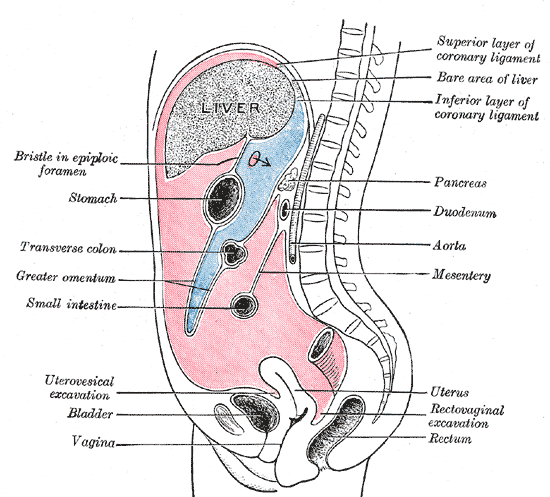There are several organs inside your abdominal cavity. A thin membrane or skin-like tissue
covers these organs for protection. The membrane is called the peritoneum, which is the serous membrane responsible for providing support to the abdominal organs. The membrane also serves as a conduit for the blood, nerves, and lymph vessels of your abdominal organs. Some organs are within the inner layer of peritoneum and are collectively referred to as the intraperitoneal organs. Keep reading to discover more about these organs and their functions within the layers of peritoneum.
Peritoneum
It may seem as if the only purpose of the peritoneum membrane is to provide support and protection to your abdominal organs. This isn't the case though. The membrane secretes serous fluid, a viscous substance that fills your abdominal cavity and provides organs a perfect environment filled with proteins and nutrients. The fluid also works as a lubricant and allows the inner organs to move a bit. The membrane also has a layer of connective tissue, including nerves and blood vessels, to support the abdominal organs.
Intraperitoneal Organs
There are three cavities in mammals: the pleural, pericardial, and peritoneal cavity. The peritoneal cavity can be divided into two separate sacs. There's a bigger sac that consists of two separate compartments called infracolic and supracolic compartment. Both these compartments contain various organs.
Several organs grow inside your peritoneal cavity. These organs include the stomach, ileum, jejunum, transverse colon, appendix, sigmoid colon, the first five centimeters of the duodenum, and the upper third part of the rectum. Other such organs include spleen, the liver, and the tail of the pancreas.
Interestingly, you will notice a difference in intraperitoneal organs of women and men. In males, peritoneal cavity is closed, but that's not the case in females because their peritoneal cavity is open and communicates with their reproductive organs. The oviducts facilitate this communication. It is due to this reason that the uterus, ovaries, fallopian tubes, and gonadal blood vessels are all within the intraperitoneum.
It is important to understand the difference between the intraperitoneal space and the abdominal cavity. The intraperitoneal space is within the abdominal cavity but has peritoneum around it. The kidneys are a good example: they are inside your abdominal cavity but are located outside the peritoneum.
The peritoneal cavity releases fluid that is yellow in color and reduces friction between peritoneal organs. The fluid also contains antibodies, leukocytes, and several other substances. The amount of fluid may increase in several diseases such as liver cirrhosis. Sometimes, you may have excessive accumulation of peritoneal fluid that leads to a condition called ascites. Cancer can also affect your peritoneal cavity – the condition is called peritoneal mesothelioma. It is a rare condition and usually has no symptoms unless the tumor has increased in size – this may produce symptoms such as frequent urination, nausea, abdominal pain, constipation, and unexplained weight gain or weight loss.
Other Peritoneal Organs
As mentioned already, several organs grow within the peritoneal cavity and are called intraperitoneal organs. However, some organs also grow outside the cavity and are therefore called retroperitoneal organs. These structures include the rest of the ascending colon, duodenum, the middle third of your rectum, descending colon, and the remainder of the pancreas. Some organs located in this space are the kidneys, proximal ureters, adrenal glands, and renal vessels. You can also see organs located right below the peritoneal space – they are in the sub peritoneal space and include the urinary bladder as well as the lower third of your rectum.
You need to understand that several structures inside the intraperitoneal space are able to move, but the ones in retroperitoneal space are relatively fixed. There are also primary and secondary retroperitoneal as well – the kidneys are primary retroperitoneal, whereas the duodenum are secondary retroperitoneal.
Intraperitoneal Organs Mnemonic
To memorize all the organs, just remember SALTD SPRSS (You could probably pronounce it as “Salted Spurss”):
S = Stomach
A = Appendix
L = Liver
T = Transverse colon
D = duodenum (the first five centimeters and the fourth part)
S = Small intestines (jejunum, ileum and cecum)
P = Pancreas (only the tail)
R = Rectum (only the upper third)
S = Sigmoid colon
S = Spleen
